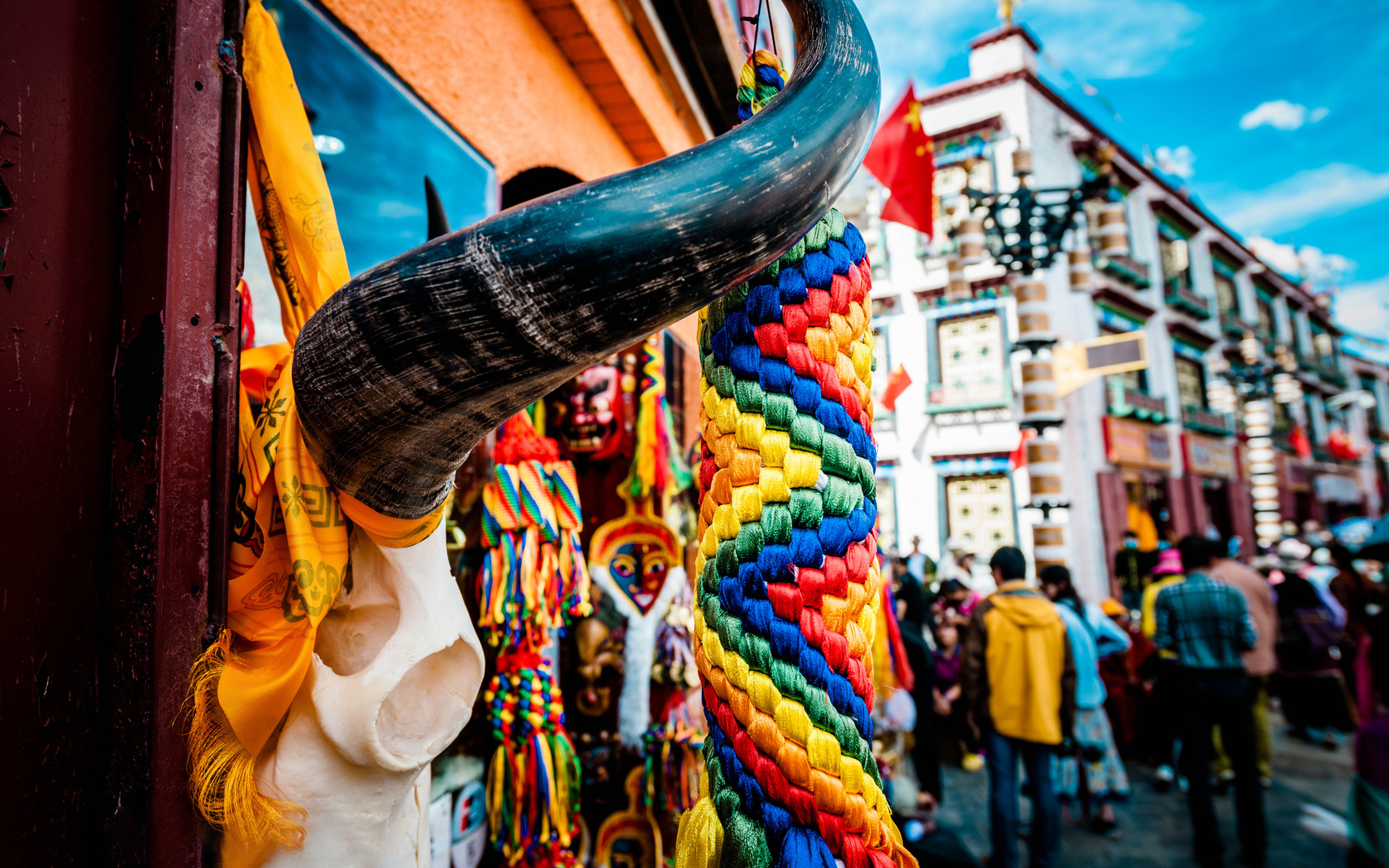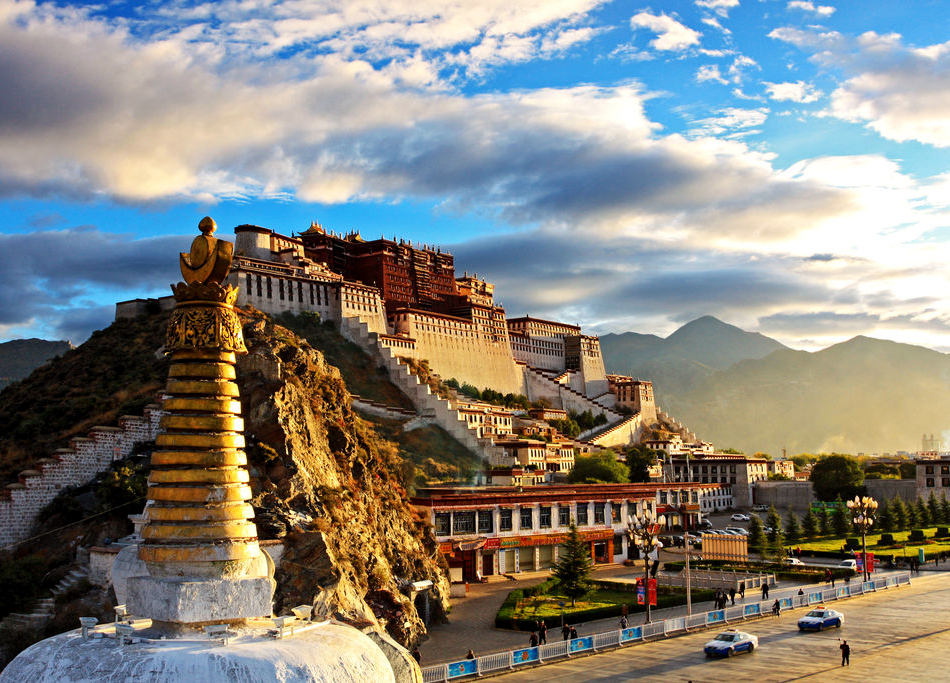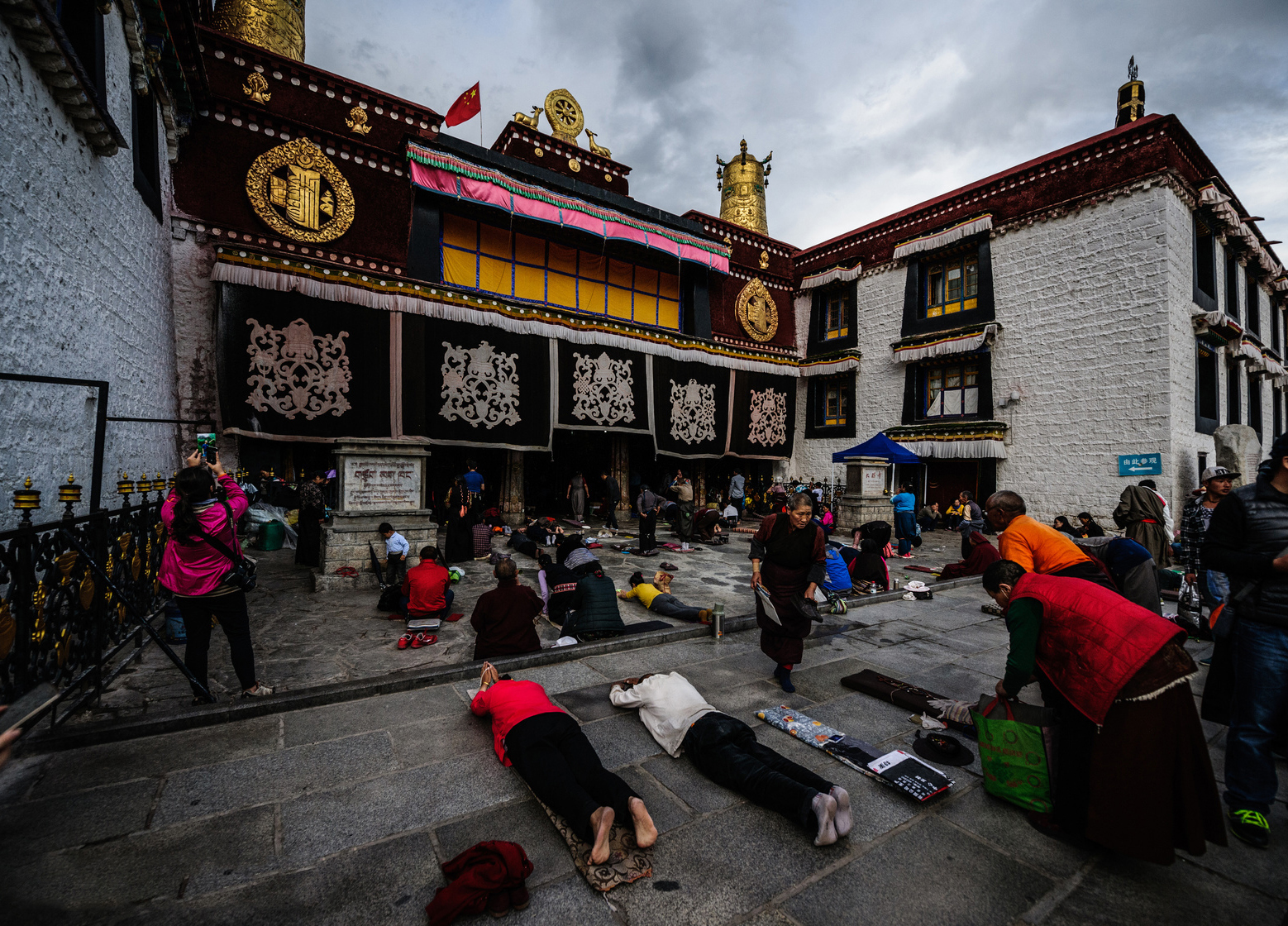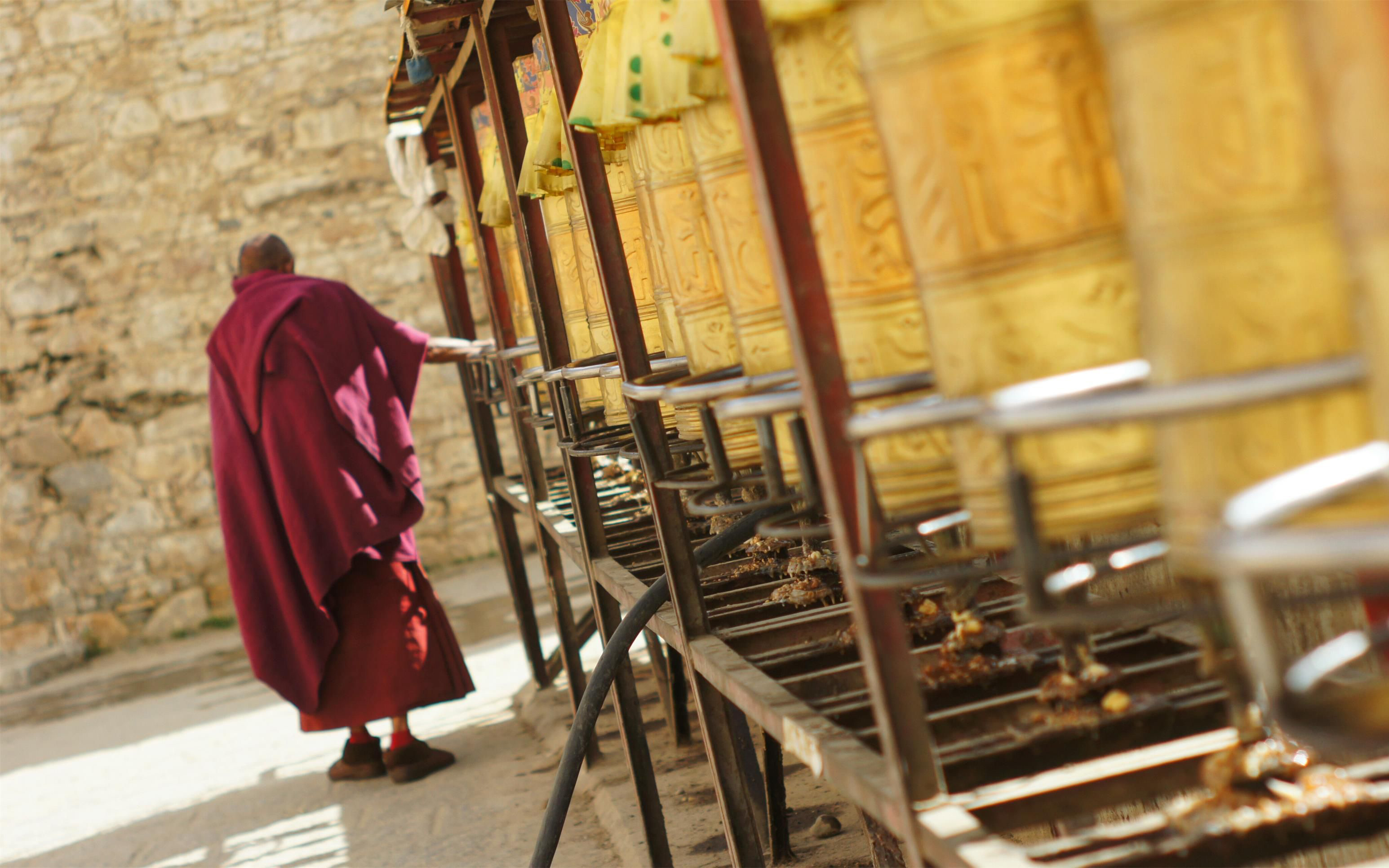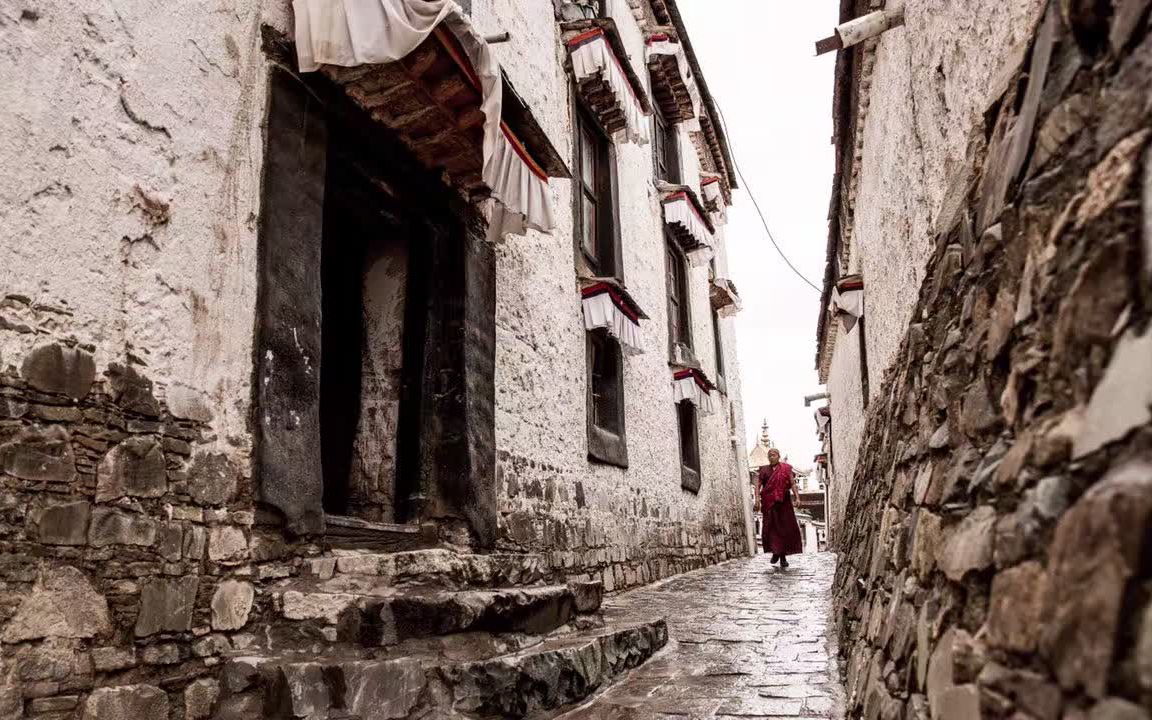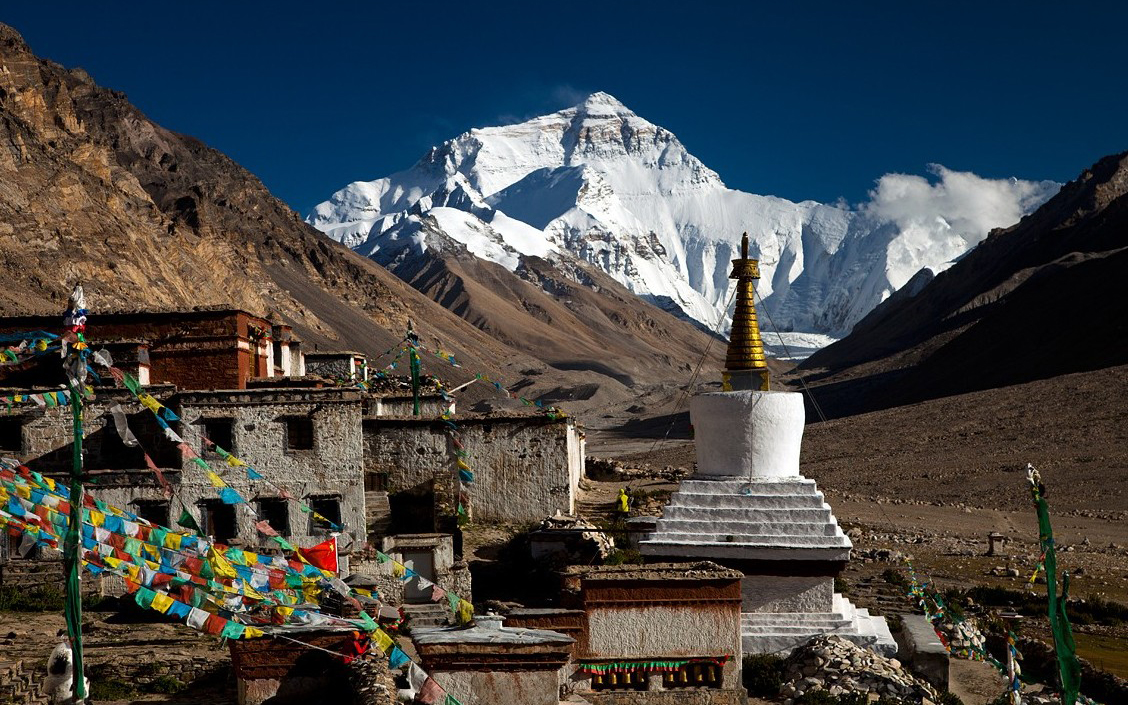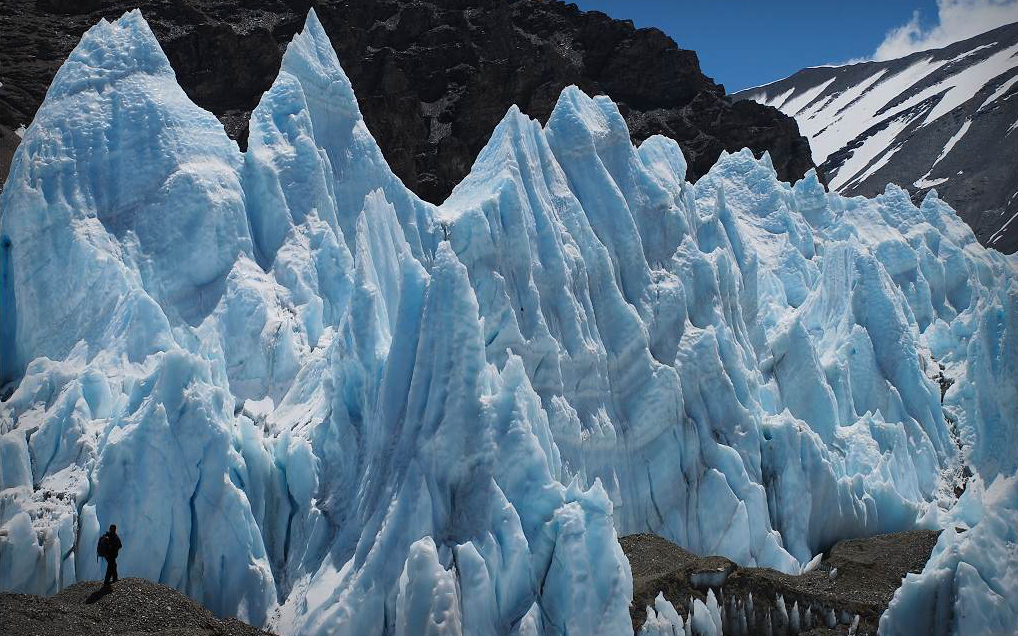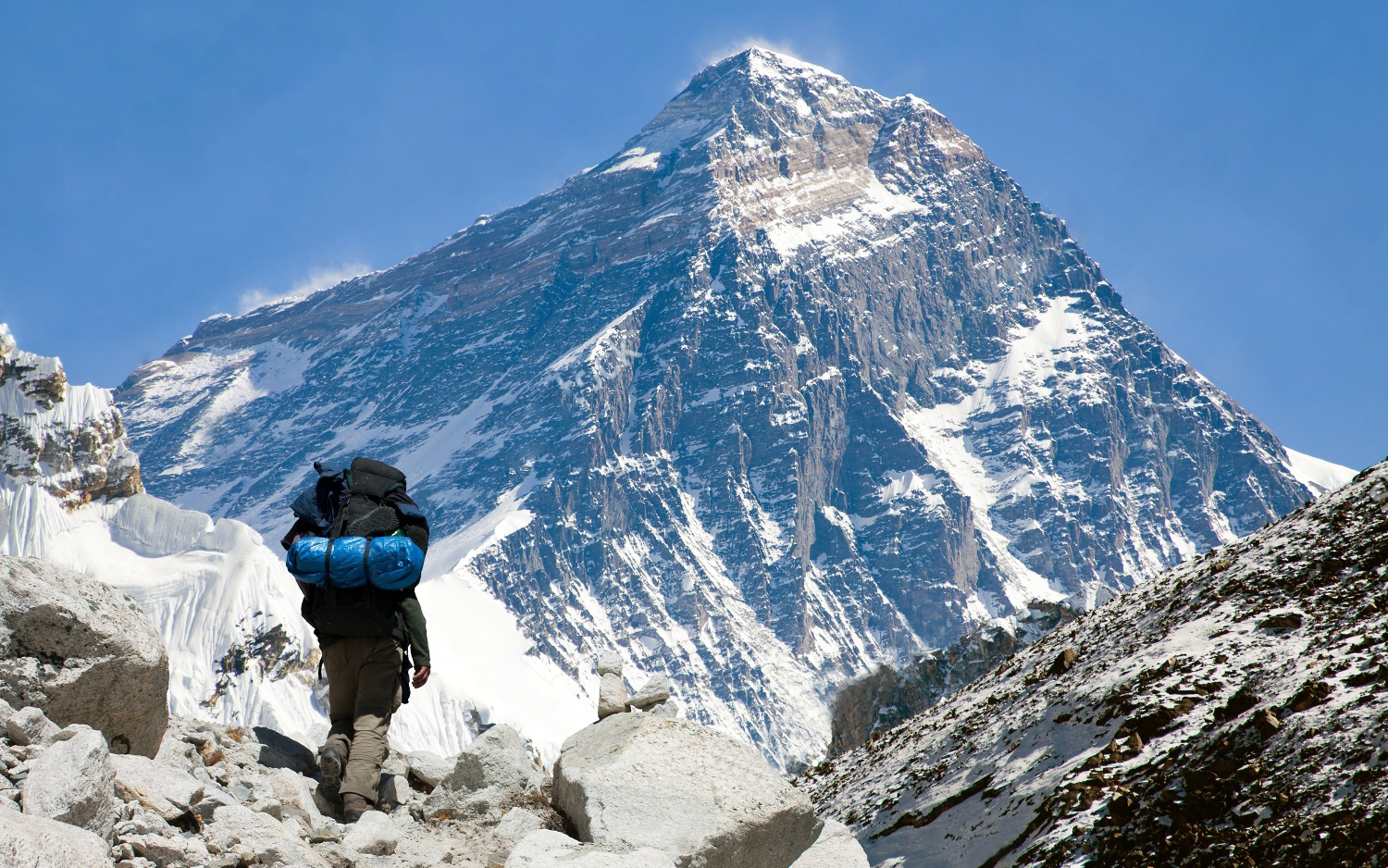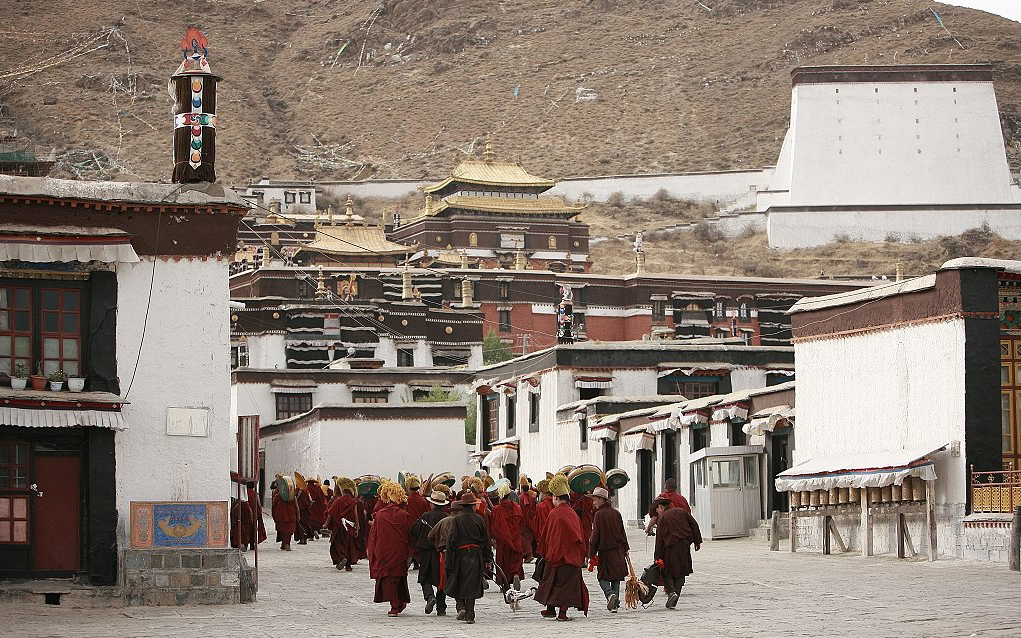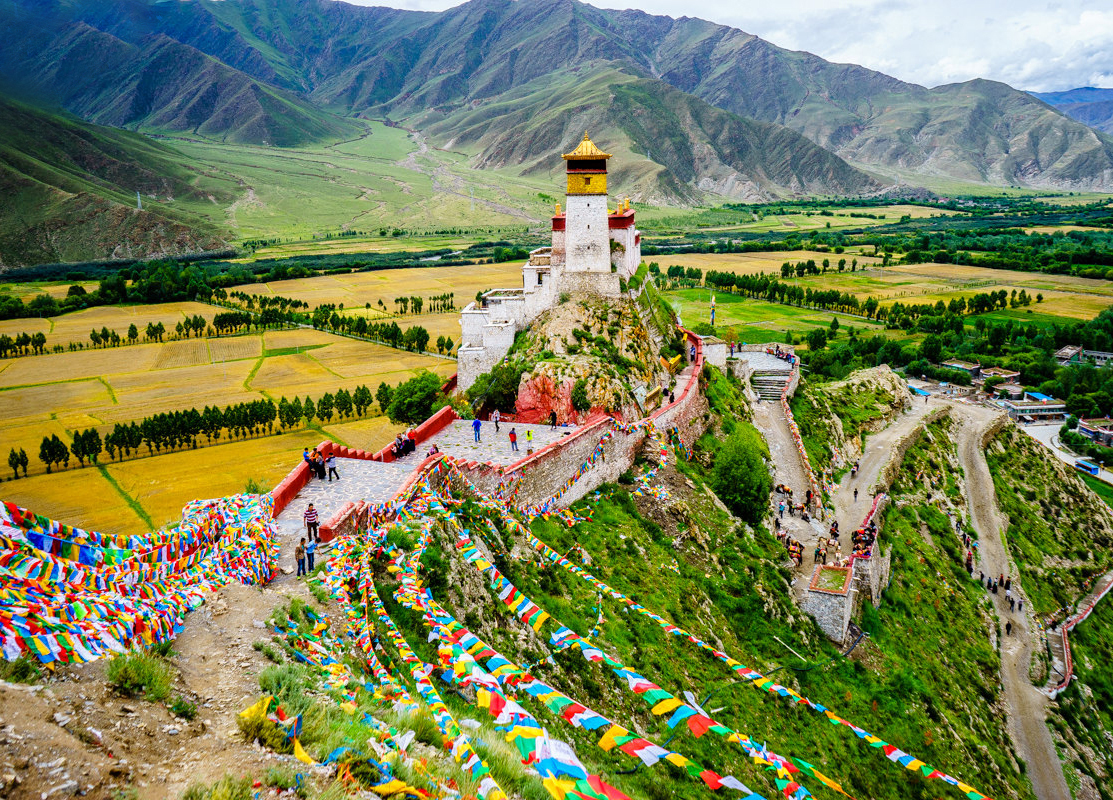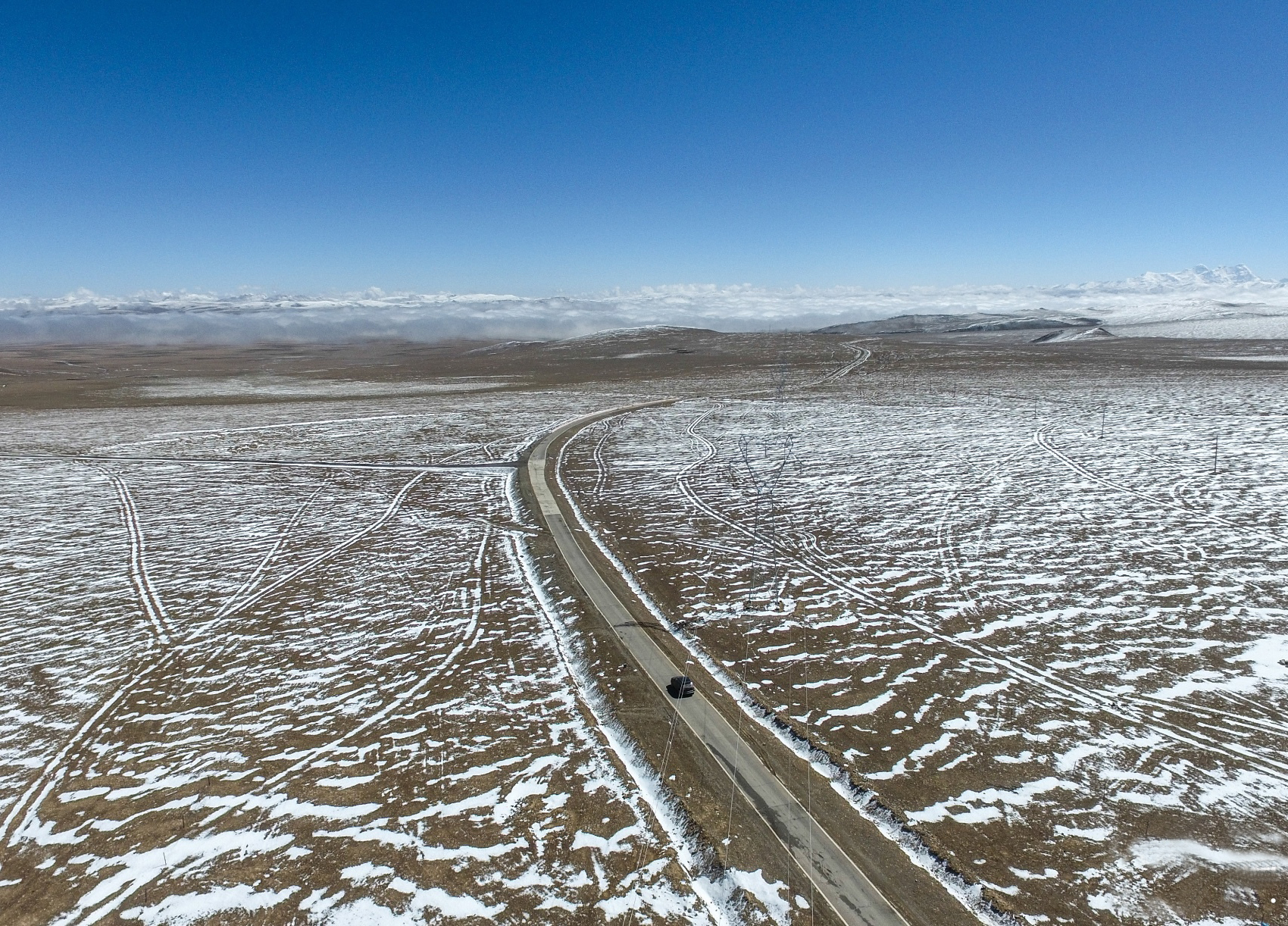TRIP OVERVIEW
Our Everest Base Camp Trek program begins by traveling from Lhasa to Lao Tingri. After spending a few days in the cultural and religious center of Tibet, you will depart Lhasa for the Himalaya region. The expedition crosses the Tibetan highlands and ventures into the Base Camp of Mount Everest (North side) via trekking which is 5200m high above sea level.
Note: All the time and distance etc shown below are approximate and indicative only, if there is inconsistency, it will depend on the weather, local road conditions and other actual situations. Besides, the duration might be revised according to your physical level.
IMPORTANT TIPS
High Altitude Sickness
The average altitude of the trekking trail from Ganden to Samye is over 3,500m. Altitude sickness is the biggest risk for travelling in Tibet, also for this trekking tour in Tibet. You need to climb over two mountain passes over 5,000m. One is Zhukar La (Shug-la) at 5250m; the other is Chetur La (Chitu-la) at 5100m.
The initial symptoms of altitude sickness are as follows: losing appetite, nausea, vomiting, insomnia/sleeplessness, dizziness, confusion, persistent headache, weakness, fatigue, heavy legs, breathlessness and breathing irregularity, etc. When you suffer from altitude sickness, please consider stopping ascending; otherwise more serious problems may occur and even cause death sometimes within just a few hours. The only remedy for the Altitude Sickness is to walk to a lower altitude.
Attacking from Animals
Tibet is home to almost 800 species of wild animals. Some 125 species are under state protection and more than 200 species are native to the Tibetan Plateau. It is advised to respect the wildlife and to maintain a safe and legal distance with the animals when trekking in the wild, which will keep you from attacking. But our reputable and professional guides can help you to cover your trip smoothly. You may be bit by insects during trekking in Tibet, so take some medicine along with you.
Besides, beware of the dogs when you are in Tibet, in the countryside and pastoral areas in particular. Nearly every family in Tibet has a maneating Tibetan Mastiff for housekeeping. If you are bitten by a Tibetan Mastiff, its owner will not hold any responsibility for you. Actually the dogs usually do not attack people who do not offend them. So just stay far away from them and do not play with them, you will be OK.
You might want to ride the trek yak or horse during trekking. You'd better move forward on the back of the horse or yak while it is lead by its owner. Do not ride it away from its owner or run with it crazily because there is a lack of measures for protecting you. You might get hurt for any carelessness.
Clothing and Equipment
Be aware that weather conditions and terrain vary significantly from one region, or even from one trail to another. Seasonal changes can significantly alter any track. These differences influence the way you dress and the equipment you carry. If you book Tibet tour from Tibet travel org, we can help you to prepare all the necessaries.
Most trekkers choose to trek in Tibet during summer. When they arrive in Lhasa, capital of Tibet, they may feel very hot. But the temperature in mountain areas of Tibet is different. It may be very cold even in day time. At night, the temperature will drop to below zero. Besides, the weather may change greatly in a day. Thus, warm clothes are necessary for trekking in Tibet in summer. Even it is hot, you are not advisable to wear shorts for you might be bitten by insects in the wild. A raincoat and a rain boot are also recommended.
As you will spend at least four nights in a tent, you need camp wares. It is very cold and wet at night, a warm sleeping bag and a moisture-proof pad will help you enjoy good nights during the trekking trip.
- Day-by-Day Itinerary
- Price Policy
- Tour Remarks
(B=breakfast, L=lunch, D=dinner)
DAY 01 Arrival Lhasa (by flight)
Welcome to the roof of the world! You will be picked up by local tour guide at the airport hall or train station, then be escorted to your hotel in Lhasa city in a private vehicle.
After arrival at your hotel, the rest of the day is free for you to explore the local area and acclimatize yourself to this high altitude city at the top of the world.
Tips of today: 1. Go for some walking to acclimate the high altitude but avoid strenuous activity after arrival; 2. You'd better not have bath; 3. Drink more water, and have some fruit; 4. Have a good rest.
Overnight at Yak Hotel or the similar
DAY 02 Lhasa (B)
Today you will visit Poatala palace and Jokhang. Potala Palace is the worldwide known cardinal landmark of Tibet. The massive structure itself contains a small world within it. Mostly it is renowned as residence of the Dalai Lama lineages (Avalokiteshvara). Both of them are the local points of pilgrims from entire Tibetan world, multitudinous pilgrims are circumambulating and prostrating in their strong faith.
Continue your tour to Jokhang Temple, which is within walking distance from Potala Palace. It is considered the spiritual center of Tibet. You will see many pilgrims worship within or nearby the temple. Enter the first floor of the temple and absorb the religious atmosphere, you will see pilgrims are donating butter oil to keep the lights burning for the Buddha. While learning about more Buddhas and Lamas than you can possibly remember you will gain a feeling for the vast history of Tibetan Buddhism. You might also hear red-robed Lamas praying. Walk up to the roof of the temple, take some pictures of the gold roof and enjoy the beautiful sunshine of Lhasa while observing pilgrims praying in front of the temple.
Finally, join locals in a traditional pilgrimage route by taking a relaxing walk in a large circular path around Jokhang Temple at Barkor Street. The street is filled with pilgrims taking part in religious activities and street venders selling a wide variety of traditional Tibetan goods and religious items. If you like you can also ask your tour guide take you to visit a Thangka workshop to marvel at the fabulous Thangka art work. There are cafes along the street as well. You can relax and enjoy the life in Lhasa in a lazy afternoon.
Tips: As you climb up to the Potala Palace, you might experience slight shortness of breath due to the exertion. Take your time and rest when needed. Please try not to disturb pilgrims; you can take pictures from a distance.
Overnight at Yak Hotel or the similar
DAY 03 Lhasa (B)
After breakfast, you are driven to visit the Norbulingka Park, the former summer palace of Dalai Lama. Explore the beautiful gardens and experience one of the most holy sites in Tibetan Buddhism while soaking up the rich history. Next, come to Drepung Monastery, which was once the largest Tibetan Buddhist monastery housing 10,000 monks in its heyday. Learn about the lives of Tibetan monks.
Your tour ends at Sera Monastery, where you will get the chance to experience "Buddhism Scriptures Debating". These debates are unique to Sera and are quite famous. Enjoy the debates!
Tips: Today, you will be driven to the outskirt of Lhasa City. The drive is not long, all within half hour. The road condition is good. A little walking or climbing is involved. Please pack plenty of water with you. Don't forget about your sun glasses and sun-cream.
Overnight at Yak Hotel or the similar
DAY 04 Lhasa to Gyantse via Yamdrok Tso and the Karola Pass (B)
Morning drive up to Kampala Pass, you will have a glimpse of Yamdrok Tso Lake on the way and spectacular views of Holy Mount Nyenchen Tanglha in the distance, which are wonders of the day. Continue westwards over another high pass the Karo La where you are treated to the spectacular sight of a huge glacier tumbling down to within a few hundred metres of the road. After passing through beautiful valleys and colorful Tibetan villages you arrive in the town of Gyantse.
Overnight at Gyantse Hotel
DAY 05 Gyantse / Sakya (B)
Before leaving Gyantse you have time this morning to visit the Gyantse Dzong and Pelkor. The Dzong is a fort dating from the 14th century from which there are amazing views of both Gyantse itself and the surrounding Nyang Chu Valley. Pelkor Monastery was built when different religious sectors conflicted neck and neck in Tibet. So it occupies a stunning position in the history of Tibetan Buddhism and features a mixture of pagoda and monastery. The most symbolic architecture in the monastery is the Kumbum Stupa, which is composed of nine layers of nearly 77 temple halls with numerous Buddha statues in halls and murals.
Continue on to Shigatse, a short drive of only 90km, arriving in time for lunch. Just close Tashilhunpo, the Old Town of Shigatse, the second largest city in Tibet, is a great place to wander around: Nicely decorated Tibetan houses and interesting market and bazaar give you a vivid picture of local people's life. Then take a 3hrs drive to Sakya, check in the hotel and have a rest.
Overnight at Sakya Hotel

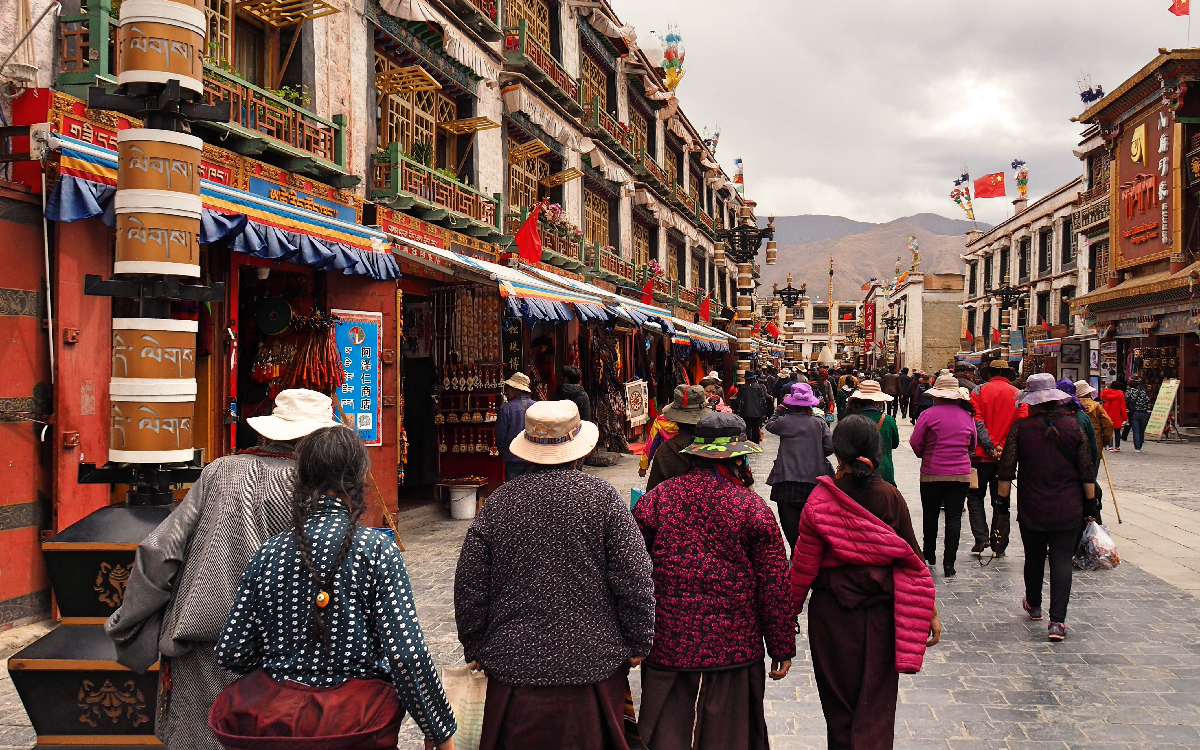
DAY 06 Sakya / Lao Tingri (B)
In the morning, you will visit Sakya Monastery, which is one of the four main Buddhist schools in Tibet. It was from here that the whole of Tibet was governed during the period of Sakya hegemony and even now there are buildings of historic importance to be seen here. You can see the largest book in the world in Sakya's great library written in gold.
After exploring Sakya Monastery, you will drive to Lao Tingri. Along the way, you will cross several high passes offering great views of the plains and snow-capped mountains.
Overnight at Kangar hotel
DAY 07 Trek from Lao Tingri to Lun Chang village (BLD)
Your trekking begins from Old Tingri all the way to the Tingri plain. The Trekking route will along the R-Chu stream and pass part of the Ra-chu Valley, you will see the beautiful valley scenery with extensive meadows and packs of sheep and goats. The rest of the day you can visit a small gompa in Chholun. Tonight will be spent in a comfortable campsite in Lun Chang. This bleak region is home only to herders and barley harvesters.
Camping
DAY 08 Trek from Lun Chang village to Nam La Pass (BLD)
From Lungchang, you will ascend to the small village of Drokpa at the base of the Nam La Pass. The challenging trekking really starts today as you go up into the mountains. Much uphill walking will be done as you climb towards the top of Nam La Pass. And you would camp above the top of this pass.
Camping
DAY 09 Trek from Nam La Pass to Rongbuk (BLD)
In the morning you descend steeply into lush vegetation. The trek will allow you to meet the indigenous yak herders and their families. And you will wind your way to the destination of Rongbuk.
Overnight at Rongbuk Monastery Guesthouse
DAY 10 Trek from Rongbuk to Mt. Everest Base Camp (BL)
Walking forward from Rongbuk Monastery, you will see the famous Rongbuk Glacier, which is the largest among all the hundreds of glaciers formed around the Mt. Everest. The views are stupendous on a clear day and feature a huge sweep of the spectacular Himalaya ranges. The three glaciers north of the Mt. Everest flow south and congregate at a river traversing the foot of the monastery. This is called 'Rongbuk River', and the water there is extremely cold.
Then trek 8km to EBC and enjoying the barren yet awe-inspiring surroundings of the Everest Base Camp. When you finally get to Everest Base Camp, the first sight of the mighty Everest simply leaves you speechless. All the hardship you bear along the way makes sense at the while. As the supreme point of the world, Mt. Qomolangma is also blessed with many starkly beautiful and extreme wonder.
Camping
DAY 11 Hike from EBC to Rongbuk / Drive to Shigatse(B)
In the early morning, trek down to Rungbuk, then drive about (360km) to Shigatse. Time permitting, you will visit Tashilunpo Monastery and the Stupa-tomb of the Tenth Panchen Lama, which contains masses of jewels and gold and is the most splendid and costly mausoleum in China since the 1950s. Do the monastery kora which provide you a great view of the whole Shigatse city.
Just close Tashilhunpo, the Old Town of Shigatse is a great place to wander around: Nicely decorated Tibetan houses and interesting market and bazaar give you a vivid picture of local people's life.
Overnight at Manasarovar hotel
DAY 12 Shigatse / Samye Monastery (B)
After breakfast, drive to Samye Monastery. Samye Monatery is regarded as the first Buddhist Temple in Tibet. It was founded in 779 by King Trisong Detsen and located in the quiet piedmont area of north bank of Yarlung Zangpo River. Samye is also the first complete with the three Buddhist jewels of Buddha, Dharma and Sangha. It has become a top destination for Tibetan Buddhists who will walk thousands of miles for weeks to finish their pilgrimage to this monastery. Today we will also have a chance to enjoy a beautiful sunset view of the Yarlung Zangbo River.
Overnight at Samye Hotel
DAY 13 Samye / Tsetang (B)
Drive from Samye to Tsetang, the third largest city in Tibet. Tsetang is known as "the cradle of Tibetan Civilization" for two reasons: first, its mild weather and fertile land conceived the great Tibet dynasty; second, it's the birthplace of the first Tibetans who were said to be the offspring of a monkey and a demoness. Today you will visit the Yumbulakang.
According to a legend of followers of the Bon religion, Yumbulakang was erected in the second century B.C. for the first Tibetan king Nyatri Tsenpo, who was descended from the sky. Yumbulagang became a shrine and under the reign of the 5th Dalai Lama, Ngawang Lobsang Gyatso, a monastery of the Gelugpa school. Yumbulakang monastery was severely damaged during the Cultural Revolution, though it has been extensively rennovated since.
Overnight at Tsetang Hotel
DAY 14 Tsetang / Lhasa / Departure (B, by flight)
After breakfast, take 2hrs drive to Lhasa Gongga Airport, see off after spending 14 days in amazing Tibet!
-The end of tour-
Please Note: While we plan to follow the itinerary as much as possible, weather, trail conditions, river crossings, and other circumstances may force us to alter the itinerary in this remote and relatively untraveled region.
TOUR COST FOR TRAVEL AGENCY: (Exchange rate: 1USD=6.5CNY)
|
4-5pax |
6-7pax |
8-9pax |
Single Supplement |
Tour cost |
CNY16,850/P
$2,592/P |
CNY15,240/P
$2,345/P |
CNY13,690/P
$2,106/P |
CNY2,090/P
$322/P |
| ($1=6.5CNY) |
- Please reserve at least TWO MONTH before the departure time.
- The exchange rate is based on USD1=6.5CNY. As the exchange rate of CNY to USD is floating, we reserve the right to adjust the quote in USD according to the exchange rate on the date you pay the tour.
- The prices do not apply to National Holidays (e.g. Chinese National Day Sep. 30th -Oct.8th).
- We reserve the right to alternate the visiting order of the scenic spots in the itinerary according to the traffic condition and other unforeseen things.
The tour cost includes
- Local transportation: A private vehicle (land cruiser in the desert or other off-road area as listed in the itinerary, bus or mini-van elsewhere in the area with good road) will accompany us for the entire tour. While we are trekking, our vehicle will transfer our food and luggage to the appointed site or hostel and wait or meet us at the end of the trekking tour.
- Equipment as required: rope (if necessary), water (4 liters per person per day), 2-way radios, compass , first aid kit, GPS.
- Leader: Experienced English-speaking tour leader and one or more service persons along the trip as needed
- Camp equipment: tents and mats
- All the Foreigner's Travel Permit and the remote area/border area if needed
- Entrance fees: All first-entrance tickets to the tourist spots mentioned in the itinerary.
- Accommodation: Nice hotel in Lhasa, twin and tri-share clean hostel in the small counties or villages, occasionally private home if indicated.
- Meals: All meals as indicated in the itinerary, picnic lunches in remote area if required(B-breakfast, L-lunch, D-dinner)
- Extra supplier or staff (only needed when the area we will trek to is non-residential and not accessible for any vehicles): cook to prepare fresh food for the group when necessary, camel and porter for carrying luggage, food, and all supporting equipment while trekking/camping.
- Travel agency liability insurance.
The tour cost does not include
- First entrance and admission fees to the attractions indicated in the itinerary.
- Lunch listed in the itinerary.
- Knowledgeable, friendly, professional English-speaking tour guide.
- Hotels/guesthouse accommodation is based on 2 adult sharing one twin-bed room; if camping, tents, mat, and sleeping bags will be provided.
- Well-equipped commercial vehicle with driver accompanying you entire trip.
- Travel Agency's Liability Insurance for the duration of your tour within China.
- Three bottles of mineral water per day per guest.
The tour cost does not include
- Individual expenses such as, but not limited to laundry, extra drink, telex,
phone calls and excessive luggage charges, favorite snacks.
- Personal items: like raincoat; cap; camera; sun-cream; sun-glasses; pocket knife; day-pack, hiking boots, etc.
- Visa fees.
- Meals that are not indicated in the tour itinerary.
- Gratuities to guides and drivers.The suggested amount is CNY60-80/per person/per day for the guide, and CNY30 for the driver to be given separately. But of course, a more generous offering is always welcomed if you are exceedingly pleased with their services.
- Our tour package does not include Travel Insurance. It is highly recommended that you purchase Travel Insurance before your trip to China.
- Rescue and Evacuation Service.
- Extra costs due to unforeseen circumstances.
- Supplementary trips, entrance fees and services not mentioned.
Cancellation and Refund Policy for Tours Reservation
| Cancellation in advance |
Cancellation penalty |
| More than 30 days |
No Cancellation Fee |
| 30-10 days |
50% of the full payment |
| 9-0 days or no show |
100% of the full payment |
- As the exchange rate of CNY to USD is subject to Change, the final price will be calculated according to the Chinese currency CNY. The price in USD dollar is just for your reference.
- We are ready to reserve the e-air ticket from another city to the starting city or from the ending city back to your preferred city if needed.
- Before you pay deposit to book the tour, we haven't made any reservation yet. The train, flight tickets and the hotel may different from the itinerary listed.
- The visiting order of the scenic spots in the itinerary may change according to the traffic condition and other unforeseen things.
- Tourist insurance is a must before going, please provide us the confirmation of insurance company when sign up.
- The prices do not apply to National Holidays (e.g. Chinese National Day Sep. 30th -Oct.8th, Or other Special Festival time).

